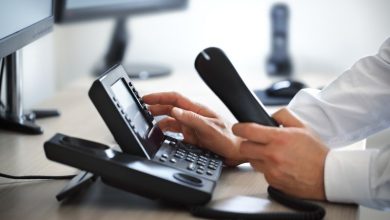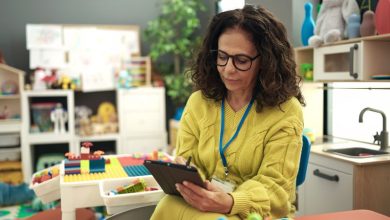Expert help available for libraries

 While the school library has changed considerably in recent times, it is certainly still as important as it ever was.
While the school library has changed considerably in recent times, it is certainly still as important as it ever was.
Computers, e-publications and other electronic wizardry mean it is now used in additional ways than in the past and there is more emphasis on effective lighting, ergonomic seating, adjustable shelving, temperature comfort and good acoustics – but the fundamental purpose remains the same – to provide adequate resources for students researching projects and to fire their intellectual enthusiasm in as many directions as possible.
As every teacher knows, many pupils find reading a daunting challenge, and one they will easily put aside for the many other interests or temptations that children have today.
The best way to banish negative feelings about reading being boring, difficult or irrelevant is to make your library a welcoming area with lots of good-looking books with really interesting covers that will tempt young people of any age to reach out and pick them up. Creative display can make a huge difference to a student’s attitude.
Books should be displayed to attract their attention or they are likely to simply ignore them. Libraries for small children should have an area where they can be read to aloud.
Rows of shelves with their books spine-out, are not likely to inspire enthusiasm, and can be quite intimidating for less confident children. When the choice is overwhelming, they may well feel it is too difficult to know where to start.
Creative solutions
School libraries in particular need to sell the experience of reading in a world where there are so many other distractions competing for a young person’s attention. If they are interested enough to pick a book up, they are very likely to read it.
It would be sensible to make it comfortable for children to be able to touch what takes their eye. Place the books at a height they can reach easily and do not try to cram too many publications on the shelves.
Students who are reluctant readers may well suffer the adverse consequences for life, so any creative ideas from librarians that might help them to take the plunge into regular reading, could have highly significant outcomes.
For instance, they could highlight individual books by turning them face-forward or giving them a special stand. Another idea is to make small displays and change them frequently – this helps children to maintain interest and makes choosing a book easier. Books for younger children in particular need to associate the books with excitement, pleasure and play. Some shelving companies have developed a range of tunnels, hidey-holes, playboards, nooks and arches that will help to do just that.
Teachers and librarians could ask children to choose a book of the day to be highlighted – then keep it going by suggesting anyone who takes it can choose the next book of the day in its place.
Intriguing discovery
With so many rapid changes happening in the use of school libraries, flexible shelving is a must these days, but it should also be interesting and inviting. Ideally, a school library should be an intriguing discovery space.
Libraries should be designed to create attractive, friendly spaces which mix books with play, discovery and peer communication.
Shelving systems can be used to create fascinating shapes – such as curves, islands and archways – making your library a place that children want to visit.
Add some play elements and seating and you have a really special place for reading activities – a place which can change a child’s attitude to books and put creative reading at the heart of a school’s culture.
Those designing the library should ask themselves whether the layout will tempt children to explore further. There are some fundamental factors in school library design that it is essential to get right, e.g. placing the circulation desk in an area that allows the librarian to see every corner of the library.
This is very important for security reasons. Make the area for computers away from direct sunlight and with sufficient electrical outlets to power the computers and other hardware.
Good guidance important
So when schools are planning a new library or modernising the existing one, where can they turn for guidance? Several local shelving companies have expertise in this regard, and offer a free advice.
The School Library Association of New Zealand looks after the interests of librarians and can assist with advice, but another valuable source is the National Library of New Zealand’s Services to Schools, which can offer a great deal of information and assistance in this regard.
The service is well known for supplying schools with requests for a huge range of publications and does an excellent job in promoting knowledge of new resources. Its nationwide campaign to bring children and teachers together with authors and illustrators has proved very successful.
But what is not always appreciated is how much assistance it can give when a school is establishing or modernising a library.
That advice can be hands-on. When a school is considering building a new library or renovating an existing one, staff can either contact their local National Library adviser or email: [email protected] .
The service website also gives advice on several different sectors:
• What will tomorrow’s school libraries be like?
• Concepts, scenarios and visions for school library spaces
• What will be important elements of the design of school library space?
• Who will be involved in imagining the scope and vision of the school library?
• School Library as Learning Commons
What will tomorrow’s school libraries be like?
In an article entitled: School libraries building capacity for student learning in the 21st Century, the authors wrote:
“A school library that becomes a high-end production facility, builds capacity for student learning in the 21st century.”
Their PDF covers how that vision might translate into library and learning spaces throughout the century ahead.
A website background on the article says “there are many scenarios for future library learning spaces that are possible models for the future and there are certain concepts that will guide the development of visions for those spaces. A primary goal of designing school libraries will be to maximise the educative value of available and emerging technologies, informed by the voices of learners and educators using human and other resources to create a place where real transformative learning takes place.
How will we design such a space?”
Concepts, scenarios and visions for school library spaces
In this area of the website, the National Library includes content, links and resources, as well as case studies to “stimulate thinking and discussion about the future design of school libraries.”
What will be important elements of the design of school library space?
In this wide-ranging section, the Services to Schools website makes the following points on design elements in the library: It will be underpinned by the goal of supporting transformative learning
It will enable learning through engagement with knowledge, guided by teachers, utilising tools and resources made available by library
It will make good use of the freedom that ubiquitous wi-fi, mobile devices will deliver, allowing creativity in the design of physical space. Flexible space that can be adapted for individual, small or large group use with acoustic considerations paramount to allow quiet individual as well as noisy collaborative work. It will encourage active learning with formal and informal areas, comfortable seating for reading, reflecting, wireless device use, group areas with multi-media access for teaching/learning.
It will have well designed areas for collections that support literacy, life-long learning and the curriculum. The allocation of space for differing functions will be aligned to amount of time spent on that function – e.g.: as technologies such as RFID become commonplace, the traditional issues desk will become redundant.
Interiors will be designed using modular, flexible, multi-use furniture and power points will be installed everywhere.
School Library as Learning Commons
“As school libraries evolve, the term learning commons is being applied to reflect the participatory, collaborative learning environment where students and teachers are learning together.
The learning commons concept embodies both a physical and a virtual learning space,” the website says.
The School Library Association of New Zealand – Te Puna Whare Mātauranga a Kura (SLANZA) aims to strengthen and promote the role of school libraries, to enable all school communities to become information literate. Through its national executive portfolios and regional networks, it endeavours to: provide a national voice for school library teams – school librarians and library assistants, teacher librarians, teachers with library responsibility and school staff involved in managing school libraries advocate for the critical role of school libraries in reading, teaching, and learning; and to provide support and networks for school library staff improve the professional standing, working conditions and qualifications for all staff involved with school libraries support professional development through conferences, network meetings, and articles published in its magazine, Collected develop links with associated national and international professional organisations.
New Zealand schools are certainly fortunate to have such useful resources to draw on.









